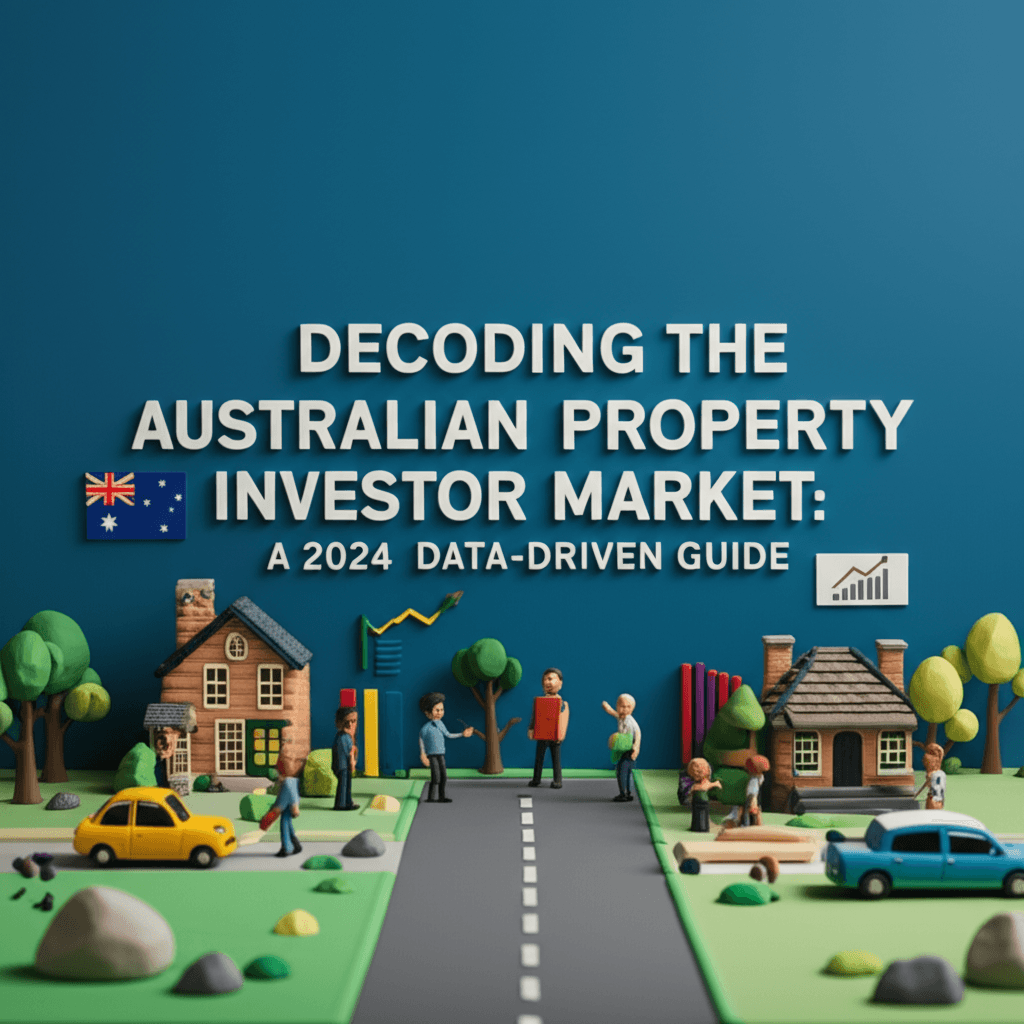Decoding the Australian Property Investor Market: A 2024 Data-Driven Guide
An expert analysis of current market trends, investor demographics, and the key data points you need to make savvy investment decisions.

The Investor Surge: Is Now the Time to Buy?
The Australian property market is currently a hotbed of activity, with investors accounting for their highest share of new lending since 2017. Driven by a historically tight rental market and the prospect of easing mortgage rates, many are asking the same question: is now a good time to invest? The data suggests a compelling, albeit complex, opportunity for those ready to dive in. Understanding the landscape, from who is investing to what makes a location profitable, is the first step towards a successful portfolio.

Who is the Modern Australian Property Investor?
Property investment is a common strategy in Australia, with approximately one in seven taxpayers reporting rental income. However, the portfolio landscape is dominated by smaller players. About two-thirds of these investors own just a single property, and another quarter own two. This is unique globally, as most countries see more corporate and government ownership of rental stock.
Unsurprisingly, the typical investor is a mid-to-late career professional, aged between 35 and 64, with a higher income. This demographic has the financial resources to service a loan and can also leverage tax advantages like negative gearing more effectively. In fact, 28% of households in the highest income quintile own an investment property, compared to just 6.5% in the lowest quintile. Interestingly, the proportion of investors aged over 60 has doubled from 14% in the early 2000s to 27% today, reflecting an aging population that is working and investing later in life.

Market Drivers: Why is Investor Activity Surging?
The recent uptick in investor activity is one of the most significant stories in the current property market. In states like South Australia, Western Australia, and Queensland, investors account for around 40% of new loans, while in New South Wales, it's closer to 45%—the highest since 2017. This surge is largely fuelled by extraordinarily tight rental market conditions.
Across the country, rental vacancy rates are at record lows, causing rents to rise rapidly and properties to lease very quickly. This high-demand environment creates an attractive proposition for potential landlords. The recent and anticipated future cuts to mortgage rates are only adding to this appeal, making it a compelling time for investors to enter or expand their portfolios. While navigating this landscape requires diligence, an AI Buyer's Agent can offer personalised guidance through the complex purchasing process.
Identifying High-Performing Investment Properties with Data
While inner-city Sydney and Melbourne remain popular hubs, savvy investors are also looking towards more affordable outer-suburban areas like Parramatta in Sydney, Wyndham in Melbourne, and Ipswich in Brisbane. These locations often provide a lower barrier to entry and can offer superior gross rental yields.
To identify a potentially strong investment, it's crucial to look beyond the location and analyse the numbers. Three core metrics provide a solid foundation for any assessment:
1. Capital Growth: This reflects the increase in the property's value over time, building your equity. Analysing 12-month and long-term trends is essential. 2. Rental Yield: This is the cash flow from your investment, calculated as the annual rental income relative to the property's price. 3. Vacancy Rate: A low vacancy rate indicates strong rental demand and a competitive market, meaning your property is less likely to sit empty. This is arguably the most critical metric, as it influences both rental income and leasing speed.
Success in property investment hinges on robust data. By leveraging powerful real estate analytics, you can compare suburbs, track market movements, and pinpoint opportunities that align with your financial goals.

Navigating Challenges and the Future Outlook
Despite the opportunities, challenges remain. High mortgage rates still impact affordability, and most investors find their properties are negatively geared, meaning expenses exceed rental income. Furthermore, government policies, such as land tax changes in Victoria, can significantly affect investor sentiment and returns.
The outlook for the next 12 to 18 months remains positive for investors. Rental markets are expected to stay tight, and further interest rate cuts will likely bolster confidence. As conditions evolve, staying informed and protected with measures like professional property management and comprehensive landlord's insurance becomes even more critical.
Conclusion
The Australian property market presents a dynamic environment for investors. Activity is at a multi-year high, driven by strong rental demand and favourable economic shifts. The modern investor is typically a higher-income professional, but opportunities exist across various price points for those who do their homework. The key to success is moving beyond hearsay and making decisions based on solid data, focusing on critical indicators like capital growth, rental yield, and, most importantly, vacancy rates. By doing so, you can position yourself to capitalise on the current market momentum.
Ready to uncover your next high-growth investment property? Use HouseSeeker's powerful real estate analytics tools to analyse market trends, compare suburbs, and find opportunities that match your investment strategy.
Frequently Asked Questions
What is the typical profile of an Australian property investor?
A typical Australian property investor is between 35 and 64 years old, in a mid-to-late career stage, and belongs to a higher-income household. The vast majority (around two-thirds) own only a single investment property.
What is 'rentvesting'?
'Rentvesting' is a strategy where an individual rents a home in their desired location while purchasing an investment property in a more affordable area. This allows them to enter the property market and build equity without compromising on their lifestyle or living in a location that may not suit them.
What is the most important metric to watch when considering an investment property?
While capital growth and rental yield are crucial, the rental vacancy rate is often considered the most important leading indicator. A low vacancy rate drives rent increases, reduces the time a property is empty, and signals a competitive, high-demand market, making it a foundational metric for assessing an area's investment potential.
